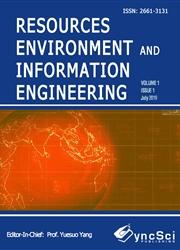Monitoring Earth's ionosphere by means of hardware-software complex using the GPS/GLONASS satellite systems
引用次数: 0
Abstract
Near real-time one-dimensional vertical electron density profiles are determined from GPS-derived total electron content (TEC) data by means of the iterative conjugate gradient projection method (CGP). Electron density profiles are determined in near realtime (within minutes of the time of measurement) from short time series of slant TEC (STEC) approximately 5 minutes. Measured STEC values are obtained from dual frequency data from a single GPS satellite at a single dual frequency receiver station. Both code-based TEC derived from the P-observable (Ptec) and phase-based TEC derived from the carrier phase observable (Ltec) are used in the solution. The CGP method addresses the ill-posed inverse problem of determining the electron density profiles from TEC measurements through the application of a side constraint to the acceptable solution. This is an iterative method which approximates the solution of a least squares problem through a converging sequence of solutions. The accuracy of the results is verified by comparison to electron density determined from the ionograms measured with Digisondes (Pushkov Institute of Terrestrial Magnetizm, Ionosphere and Radio Wave Propagation, Russian Academy of Science) located at Troizk, Moscow region (55.5N, 37.3E). The results of a hardware-software complex intended for monitoring the Earth's ionosphere according to navigation satellite systems are presented. The anomalous behavior of the critical frequency of the F2-layer ionosphere at latitudes 57-59 degrees observed in December 2014 is detected.利用GPS/GLONASS卫星系统,通过软硬件结合的方式监测地球电离层
利用迭代共轭梯度投影法(CGP)从gps总电子含量(TEC)数据确定了近实时的一维垂直电子密度剖面。从大约5分钟的斜TEC (STEC)短时间序列中,可以近实时地(在测量时间的几分钟内)确定电子密度分布。测得的STEC值来自单个GPS卫星在单个双频接收站的双频数据。该解决方案使用了从p -可观测值(Ptec)衍生的基于代码的TEC和从载波相位可观测值(Ltec)衍生的基于相位的TEC。CGP方法通过对可接受的解施加侧约束来解决从TEC测量中确定电子密度分布的不适定逆问题。这是一种通过收敛的解序列逼近最小二乘问题解的迭代方法。通过与位于莫斯科地区(55.5N, 37.3E) Troizk的Digisondes(俄罗斯科学院普什科夫地磁、电离层和无线电波传播研究所)测量的电离图所确定的电子密度进行比较,验证了结果的准确性。本文介绍了一种用于根据导航卫星系统监测地球电离层的硬件-软件复合体的结果。对2014年12月观测到的57 ~ 59°纬度f2层电离层临界频率的异常行为进行了检测。
本文章由计算机程序翻译,如有差异,请以英文原文为准。
求助全文
约1分钟内获得全文
求助全文

 求助内容:
求助内容: 应助结果提醒方式:
应助结果提醒方式:


